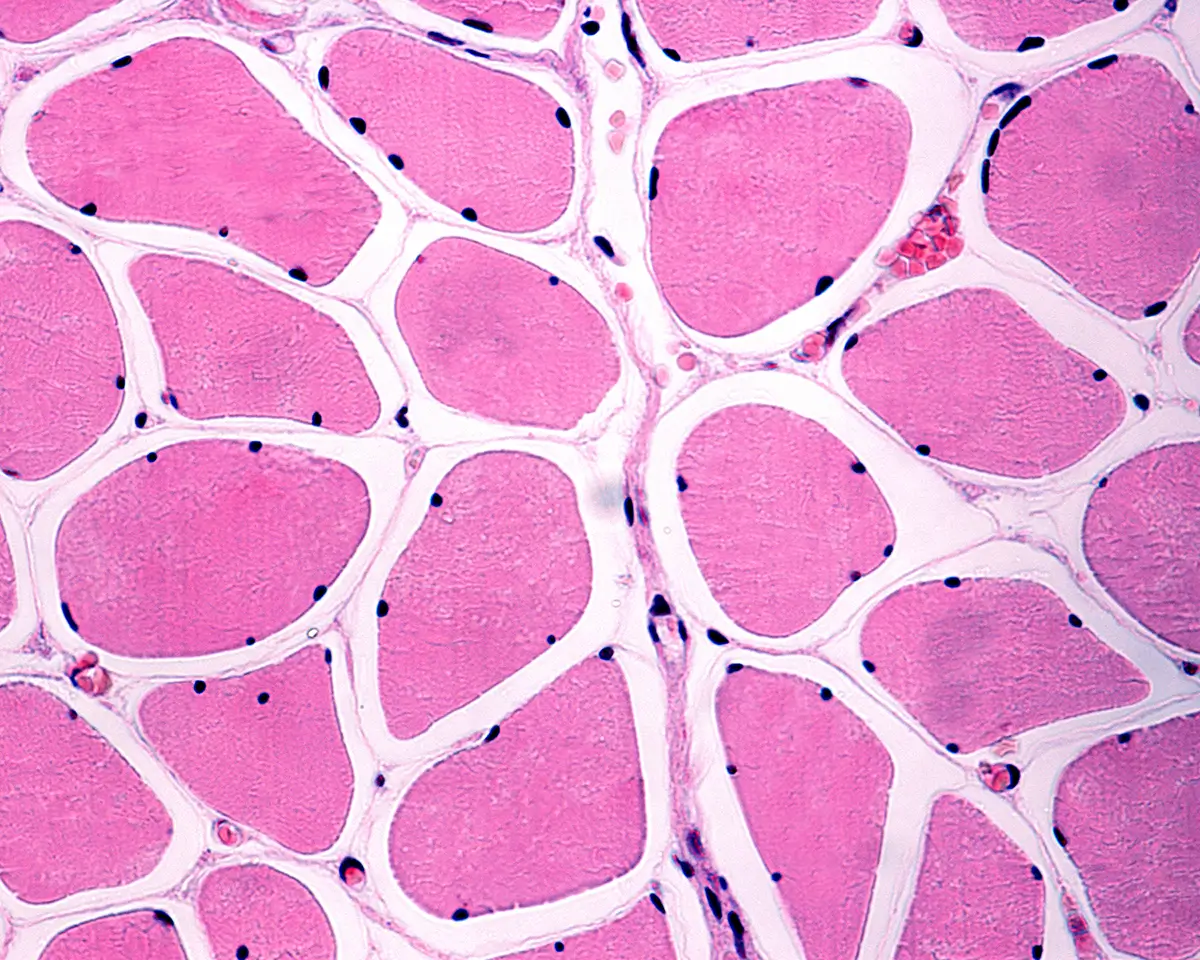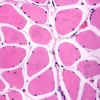It turns out that "muscle memory" isn't just gym lore. This new study suggests myonuclei (muscle cell nuclei) gained from 10 weeks of resistance training persist after 16 weeks of detraining. Could this provide assurance that regaining muscle and strength will happen after time off from training? Or, does this indicate that gains could be even better with periods of hard training interrupted by periods of little to no training? Let's dive into this fascinating new study and find out.
Overview
- What did they test? The researchers had participants complete 10 weeks of unilateral resistance training (i.e., single-arm biceps curls) followed by 16 weeks of detraining (no training for either arm). After the detraining period, both arms completed an additional 10 weeks of resistance training. Strength, biceps muscle thickness, and muscle biopsy samples were measured before and after each period. Muscle fiber cross-sectional area, myonuclei, and gene expression were assessed from the biopsy samples. The researchers compared the muscles that weren't trained in the first 10-week training period (control arm) to the muscles that were (trained arm) in order to better characterize potential “muscle memory.”
- What did they find? The initial training period led to an increase in the number of myonuclei in both type 1 and type 2 muscle fibers in the trained arm. The increases appeared to be maintained after 16 weeks of detraining. After the second 10-week training period, type 2 fibers in the trained arm displayed more myonuclei than the control arm. However, this did not translate to significantly greater gains in muscle thickness and strength in response to the second training period. The control arm ended up displaying similar increases in strength and muscle thickness after all 36 weeks of the study. Although myonuclei increases were maintained after 16 weeks of detraining in the trained arm, the overall changes in muscle thickness and strength were not significantly different between the arms at the end of the study.
- What does this mean for you? While muscle memory mediated by additional myonuclei gained from prior training can offer some benefit in regaining muscle and strength after a break, consistent training with progressive overload remains crucial for maximizing muscle growth and strength gains over time. More research is needed to better understand the implications of the apparent permanence of added myonuclei from resistance training for practical application.
What’s the problem?
Increases in myonuclear content have been associated with muscle growth from resistance training 1. Increases in myonuclear content in response to resistance training are mediated by muscle stem cells called satellite cells. These satellite cells are activated in response to the mechanical stress imposed by resistance training and, at least to some extent, damage to muscle structure. This satellite cell activation process can lead to the donation of nuclei to muscle aiding in its regeneration and subsequent growth. In fact, Petrella et al. reported individuals that gained the most muscle in response to 16 weeks of resistance training appeared to possess greater satellite cell counts at baseline, and displayed the largest increases in myonuclear content 2. Considering these results, it has been posited that myonuclear content increases from training, along with epigenetic processes, could be associated with "muscle memory" 3 4. Muscle memory refers to the idea that muscles "remember" prior training which allows for quicker or more efficient retraining after a period of detraining.
Previous studies are mixed regarding if myonuclei gained from resistance training are maintained during periods of detraining. For example, Lee et al. reported myonuclei gained from eight weeks of resistance training were maintained after twenty-eight weeks of detraining in rodents 5. Bruusgaard and colleagues also reported "myonuclear permanence" in rodents after overloading skeletal muscle through synergist ablation for two weeks followed by denervation for two weeks. Two weeks doesn't seem like much time, but keep in mind one day for a rodent is considered approximately equivalent to one month in humans 6. Therefore, these rodent studies suggest that resistance training-induced increases in myonuclear content would be maintained with detraining. However, Rahmati et al. reported that increases in myonuclear content from resistance training do not appear to be maintained in humans after detraining in a systematic review and meta-analysis published in 2022 7.
This new study from Cumming and colleagues sought to fill a gap in the existing human research through a novel study design addressing limitations in prior research. For example, prior studies mostly focused on the vastus lateralis muscle which is regularly used in daily activities and harder to detrain completely. The researchers focused on the elbow flexor muscles (biceps brachii), which are less involved in daily activities, allowing for a clearer examination of detraining and retraining effects. Additionally, previous studies used between-group comparisons, which can be confounded by individual variations in the training response. This new study employed a within-subject design, comparing the previously trained arm to the untrained arm in the same individual reducing the impact of individual variability. Further, some previous studies in humans failed to induce significant increases in myonuclear content from an initial training period and the researchers designed a protocol to increase the probability that significant increases in myonuclear content would occur. Finally, this research group leveraged advanced analytical procedures to improve confidence that accurate myonuclear contents were detected. They also used state-of-the-art transcriptomics to uncover any differences in transcriptional regulation (i.e., gene expression) between a previously trained arm and untrained arm.
Purpose
The purpose of this study was to investigate mechanisms behind muscle memory in humans with a focus on myonuclear permanence and transcriptional regulation. The researchers posited four questions they sought to answer:
- Does strength training increase the number of myonuclei in muscle fibers?
- Is this increased myonuclear number maintained even after a period of detraining (no training)?
- Are there differences in gene activity between previously trained and untrained muscles after detraining?
- Do the increased myonuclei and potential gene activity differences lead to greater muscle growth and strength gains during retraining, compared to untrained muscles?
Hypothesis
Although hypotheses were not explicitly stated considering the exploratory nature of this study, some were implied by the introduction and research questions. For example:
- The initial 10-week training period would lead to increases in myonuclear content and these increases would be maintained during 16 weeks of detraining.
- Differences would be observed in gene expression between the previously trained arm and untrained control arm.
- Increased myonuclear content and differences in gene expression between the previously trained arm and untrained arm might be associated with greater gains in muscle size and strength in response to the second 10-week training period.







